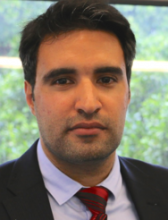Renewables are Key to Lebanon’s Sustainable Energy Mix Planning
Renewable energy should be a centerpiece of the plans to improve Lebanon’s energy system rather than an add-on.
At a time when some countries have already achieved close to 100% renewable energy penetration, Lebanon has set its sights on just 12% renewable energy generation by 2020-2030[1], a target that is both unambitious and financially short-sighted. Additionally, it ignores the ideal conditions for renewable energy generation in Lebanon.
Lebanese policymakers certainly face an unenviable task when it comes to energy planning. With the current state of the electric system, in which most of the population is putting up with daily electricity cuts and relying on private generators to make up the difference, there is a strong temptation for decision-makers to choose quick fixes over long-term planning.
The government’s primary objective in its current energy plan is to provide a 24-hour supply of electricity to the population over the medium term. However, the current plan disregards the potential for renewable resources to be an integral part of Lebanon’s energy mix and a key part of the solution to the country’s energy shortages, rather than simply a policy “add-on.”
The plan to rely on rented power barges in the near term doesn’t take into consideration the huge cost it needs to operate. The cost of the barges is expected to be $700 million per year, with a capacity of 825 megawatts. They are expected to operate for three years, which is the time needed for the government to invest in new gas-fired plants. However, it seems that the tendering process alone will likely take two years and the construction phase up to four, meaning that the new gas-fired plants will not be operational before 2024. Now if we modestly assume that the barges will only operate for four more years, the total cost will amount to $2.8 billion. For that amount, it would be possible to build a state-of-the-art solar power plant, in less than two years, which would produce the same amount of energy as the barges over the next 25 years, not only four.
Naysayers will usually argue, first, that Lebanon does not have enough suitable land to support a major expansion of solar power; and second, that the grid as currently configured is not capable of supporting a much higher penetration of solar power because of the intermittent nature of the technology.
Contrary to popular belief, Lebanon has an abundance of potentially suitable land. I co-authored a recent study by the Energy Policy and Security Program at the American University of Beirut (AUB) and the National Council for Scientific Research (CNRS) in which we found that Lebanon has a minimum of 60 square kilometers of land suitable for utility-scale solar projects of capacity greater than 300 megawatts peak. Most of the land is in eastern and northeastern Lebanon, areas which are among the most underdeveloped in the country and could benefit substantially from the jobs that would be created, as well as from the supply of 24-hour electricity.
As to the question of the grid, it is true that to fully realize the potential of solar power, upgrades will be needed. But the grid needs to be modernized, in any case, and this should be a priority. In the meantime, the grid is most likely able to support solar projects with capacity higher than what the government is currently opening bids for.
It is also true that Lebanon is not realistically capable of approaching 100% renewable penetration in the near future, as countries like Iceland and Costa Rica have already done. But that does not mean that Lebanon should give up in investing in renewable energy completely.
Lebanon could realistically increase its renewable energy penetration to 24% by 2024 by building 2,500-megawatt peak of solar photovoltaic facilities in two or more phases: the first 1,000 to be completed by 2020 and the remaining 1,500 by 2024.
By doing so, we could limit the need for the power barges to two or three years, saving billions of dollars in the long-term. The construction of the added solar capacity would also eliminate the need for about 500 megawatts of gas-fired power generation, which would add further cost savings over the next 25 years. This would have environmental benefits beyond the usual air quality and climate arguments for switching from gas to solar, as some of the sites currently slated for new gas-fired plants have serious suitability issues. The Selaata site, for instance, is a marine protected area with archeological significance.
By incorporating the potential solar capacity into the current power plan, and with the addition of energy storage capacity to deal with short-term power deficits during the day, Lebanon could reach its goal of 24-hour electricity by mid-2025, while creating a cleaner energy system and eliminating the need for expensive and polluting diesel generators.
http://www.executive-magazine.com/cover-story/let-the-sunshine-in
http://website.aub.edu.lb/ifi/publications/Documents/working_papers/20170808_solar_pvs.pdf
Lebanon’s Electricity Policy Paper (2010), Ministry of Energy, Republic of Lebanon, available at http://s50.omsar.gov.lb/Docs/Strategies/NEstrategy_en.pdf
[1] http://s50.omsar.gov.lb/Docs/Strategies/NEstrategy_en.pdf
Ali Ahmad is the director of the Energy Policy and Security Program at the American University of Beirut.
The views expressed here are solely those of the author in his/her private capacity and do not in any way represent the views of neither the Arab Development Portal nor the United Nations Development Programme.
